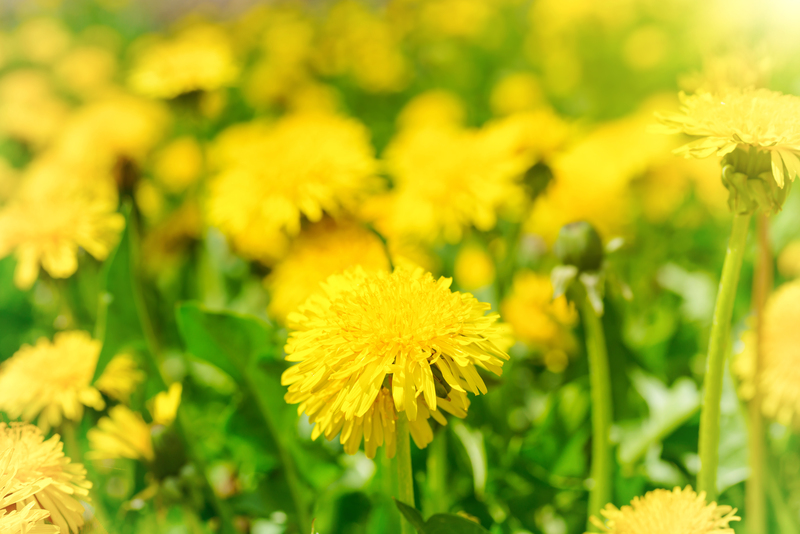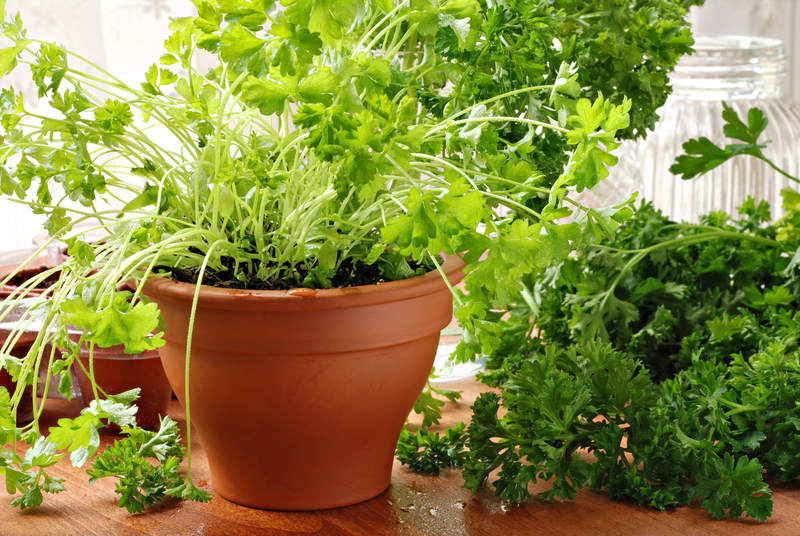How to Maintain a Healthy Lawn During Summer Drought Conditions
A lush, green lawn is the pride of homeowners everywhere. However, maintaining a healthy lawn during summer drought conditions can be a significant challenge. Prolonged periods of hot, dry weather can stress your lawn, leaving it brown, brittle, and prone to weeds and disease. But with the right strategies, you can help your yard not just survive, but thrive even during the toughest summers.
Understanding the Impact of Drought on Lawns
Drought is a period of significantly reduced rainfall, leading to soil moisture deficits. Most types of grass are sensitive to water stress and may enter a state of dormancy during extended dry spells. The result? Patchy, brown grass, weed invasion, and increased vulnerability to pests and diseases. Preventing extensive damage starts with the understanding of how drought affects your turfgrass and what you can do to minimize the impact.

Top Tips to Maintain a Healthy Lawn During Summer Drought
1. Choose Drought-Tolerant Grass Varieties
One of the most effective ways to maintain a lush, healthy lawn amid drought is to plant grass species that naturally require less water. Consider drought-resistant grass varieties such as:
- Bermuda Grass - Highly drought-tolerant and thrives in warm climates.
- Zoysia Grass - Excellent heat resistance and low water requirements.
- Buffalo Grass - Native to the Great Plains and survives on minimal irrigation.
- Tall Fescue - Deep root system makes it adaptable to dry conditions.
When selecting grass for your yard, always look for species suited to your local climate and soil conditions.
2. Efficient and Deep Watering Techniques
Water is a precious resource during periods of drought. Instead of daily shallow watering, practice deep and infrequent irrigation. This encourages deep root growth, making your lawn more drought-resilient.
- Water Early: Water lawns between 4 a.m. and 9 a.m. to reduce evaporation.
- Soak the Soil: Aim for about 1 inch of water per week, delivered over one or two waterings.
- Check Soil Moisture: Insert a screwdriver or probe into the soil. If the top 6 inches are moist, your job is done!
Avoid frequent, light sprinklings--they promote shallow roots and increase water loss through evaporation.
3. Mulch and Manage Lawn Clippings
Grass clippings can be your lawn's best friend during drought. Mulch mowing returns finely chopped clippings to the soil, providing nutrients and helping conserve moisture.
- Use a mulching mower and leave clippings on the lawn.
- Apply a thin layer of organic mulch in problem areas to shield the soil from direct sun.
- Avoid overusing fertilizers during drought, as this can stress the grass further.
4. Raise Mower Blade Height
Raising your mower blade and leaving the grass taller conserves soil moisture and shades the roots. A mowing height of 3-4 inches is ideal for most grass types during periods of drought.
- Mow less frequently to reduce stress.
- Keep mower blades sharp to avoid tearing grass blades.
- Never remove more than one-third of the grass blade height at a time.
5. Aerate the Soil
Compacted soil prevents water from reaching grass roots. Aerating your lawn improves water and nutrient penetration.
- Use a core lawn aerator for the best results.
- Aerate in spring or fall, but avoid when soil is extremely dry or very wet.
- Aeration allows oxygen, water, and nutrients to reach deep into the soil where they are most needed during drought.
6. Limit Lawn Traffic
During drought, grass is weaker and more susceptible to damage from foot traffic and lawn equipment.
- Designate walking paths or use stepping stones.
- Minimize play and pets on stressed areas.
- Avoid parking vehicles or equipment on the lawn.
7. Adjust Fertilization Schedules
While fertilizing encourages lush growth, doing so during a drought can backfire. Excess nutrients force the grass to use more water, which isn't available, compounding stress.
- Postpone fertilizing until after periods of drought.
- If you must fertilize, use a slow-release organic fertilizer and water it in well.
- Focus on good cultural practices over chemical fixes during drought.
Advanced Lawn Care Strategies for Summer Drought
Smart Irrigation Systems
Harness smart technology for optimal lawn care during drought. Smart irrigation systems and Wi-Fi enabled controllers adjust watering schedules based on local weather and soil conditions, preventing waste and promoting healthy lawns.
- Install moisture sensors to monitor real-time soil moisture.
- Connect with weather apps for automatic adjustments during rainfall or extreme heat.
- Use drip irrigation or soaker hoses for targeted watering, reducing evaporation loss.
Soil Improvement and Top Dressing
Weak, compacted, or sandy soils lose water faster. Annually top dress your lawn with a blend of compost and loam to increase organic matter and improve moisture retention.
- Apply a thin layer (up to ½ inch) of screened compost over the lawn in early spring or late fall.
- Encourage earthworm activity to aerate and rebalance the soil.
- Test your soil's pH and nutrients; adjust to maintain optimal grass health.
Weed and Pest Control
Drought-impacted lawns are particularly susceptible to weed invasions and pests. Weeds often outcompete turfgrass for scarce moisture, while insects and pathogens attack stressed grass.
- Hand pull weeds or spot-treat with non-toxic solutions to minimize chemical exposure.
- Encourage beneficial insects (like ladybugs) to control lawn pests.
- Monitor regularly for signs of trouble and address early.
Understanding Lawn Dormancy: It's Natural!
*Did you know?* Most healthy lawns will turn brown and go dormant during periods of extended drought. Dormancy is a natural survival mechanism, and with proper care, your lawn should recover once rains and cooler weather return. Don't panic if your grass loses color; it's the plant's way of conserving moisture and energy.
- Do not fertilize during dormancy.
- Water sparingly just to prevent total dehydration of roots (1/4 inch every 3-4 weeks).
- Once normal weather resumes, gradually return to your regular lawn care routine.
Frequently Asked Questions About Drought Lawn Care
How often should I water my lawn during drought?
During drought, water deeply--but less often. Apply 1 inch of water once a week, ideally in the early morning. Avoid daily watering to prevent shallow roots.
Will my lawn survive if it goes brown?
Yes! Most established lawns will survive up to 4-6 weeks of drought by going dormant. As long as the grass crown survives, your turf should green up again with rain.
Should I overseed with drought-resistant types?
If you struggle yearly with drought, overseed with drought-tolerant varieties in fall or early spring for a healthier, more resilient lawn.
What is the best mowing height in hot, dry conditions?
Keep mower blades set at 3-4 inches. Taller grass provides better shade for roots and supports deeper moisture retention.
Can I apply pesticides during drought?
Avoid applying pesticides during extreme drought, as the chemicals can stress injured turf and harm beneficial organisms.

Conclusion: Green Lawns Are Possible Even During Drought
Maintaining a healthy, green lawn during summer drought conditions is challenging, but not impossible. By choosing drought-resistant grasses, leveraging smart watering practices, building healthier soil, and using adaptive lawn care strategies, you can protect your yard and enjoy its beauty all season long.
Remember:
- Conserve water by watering deeply and less frequently.
- Raise mower blades and mulch clippings for natural moisture retention.
- Limit fertilizer and chemical use during drought.
More Resources for Drought Lawn Care
- EPA WaterSense: Lawn and Garden
- BHG: Lawn Drought Survival Tips
- National Gardening Association: Drought-Tolerant Lawns
If you found these lawn care tips for summer drought conditions useful, be sure to share with your neighbors and help keep your community green!